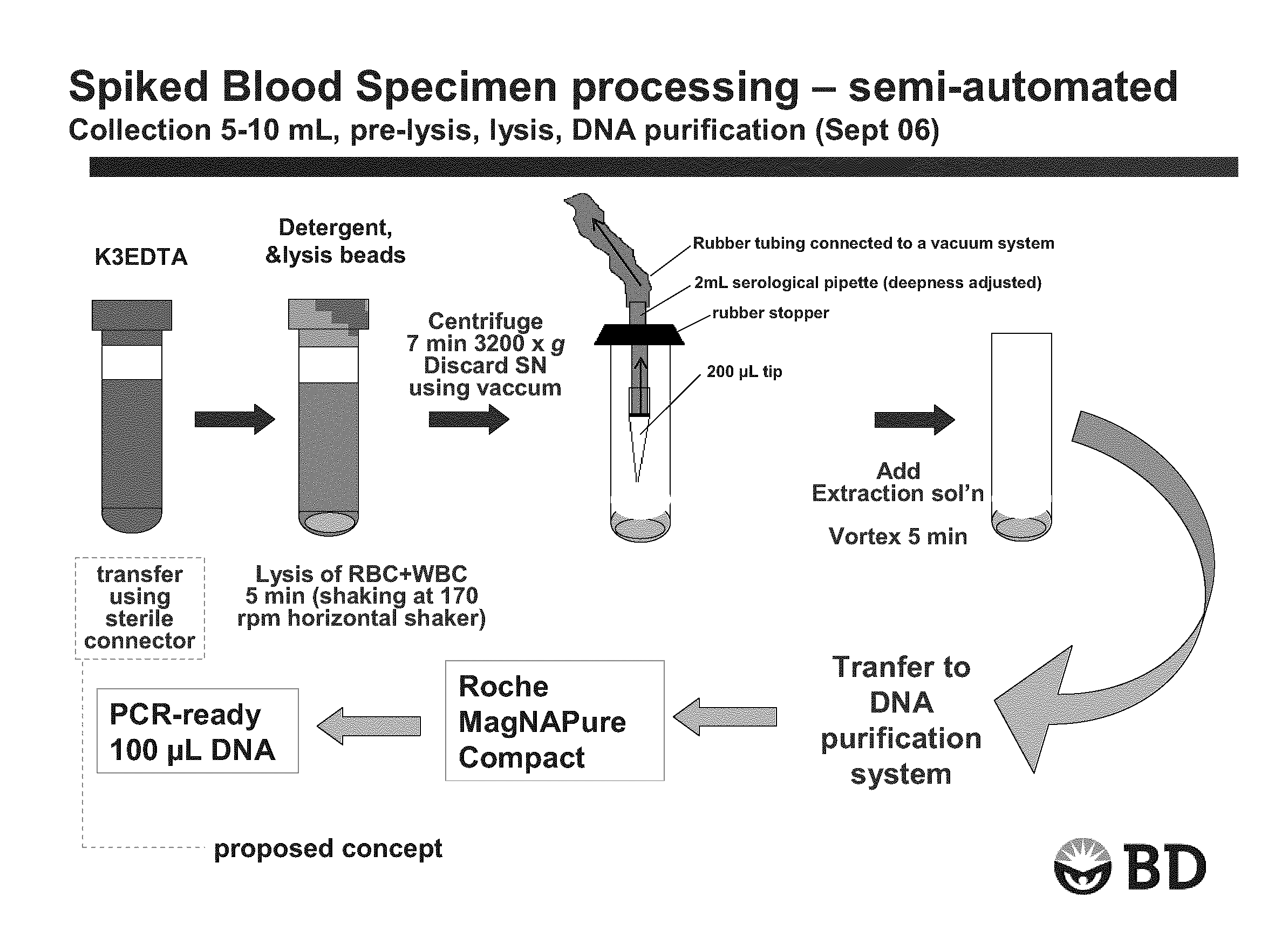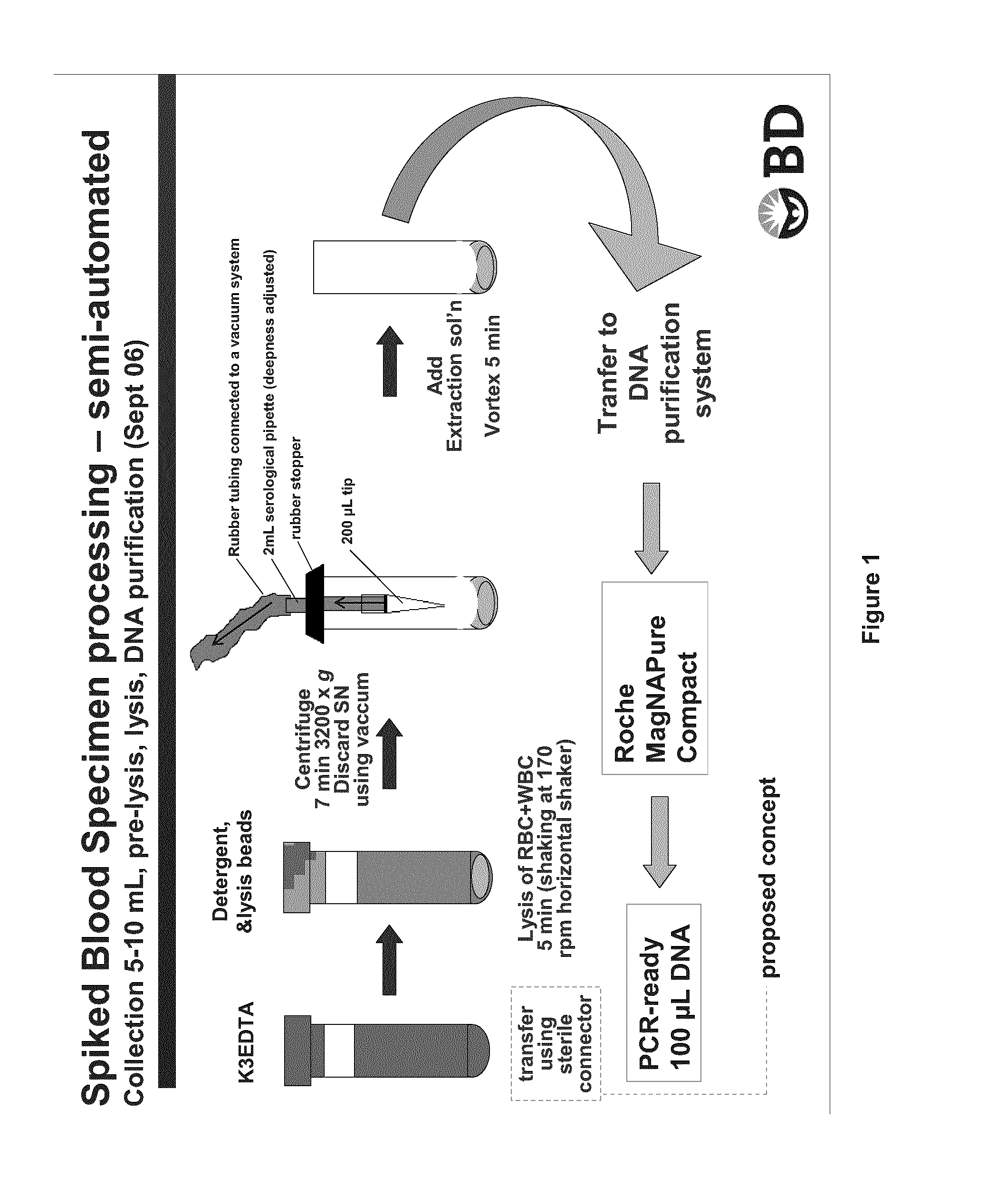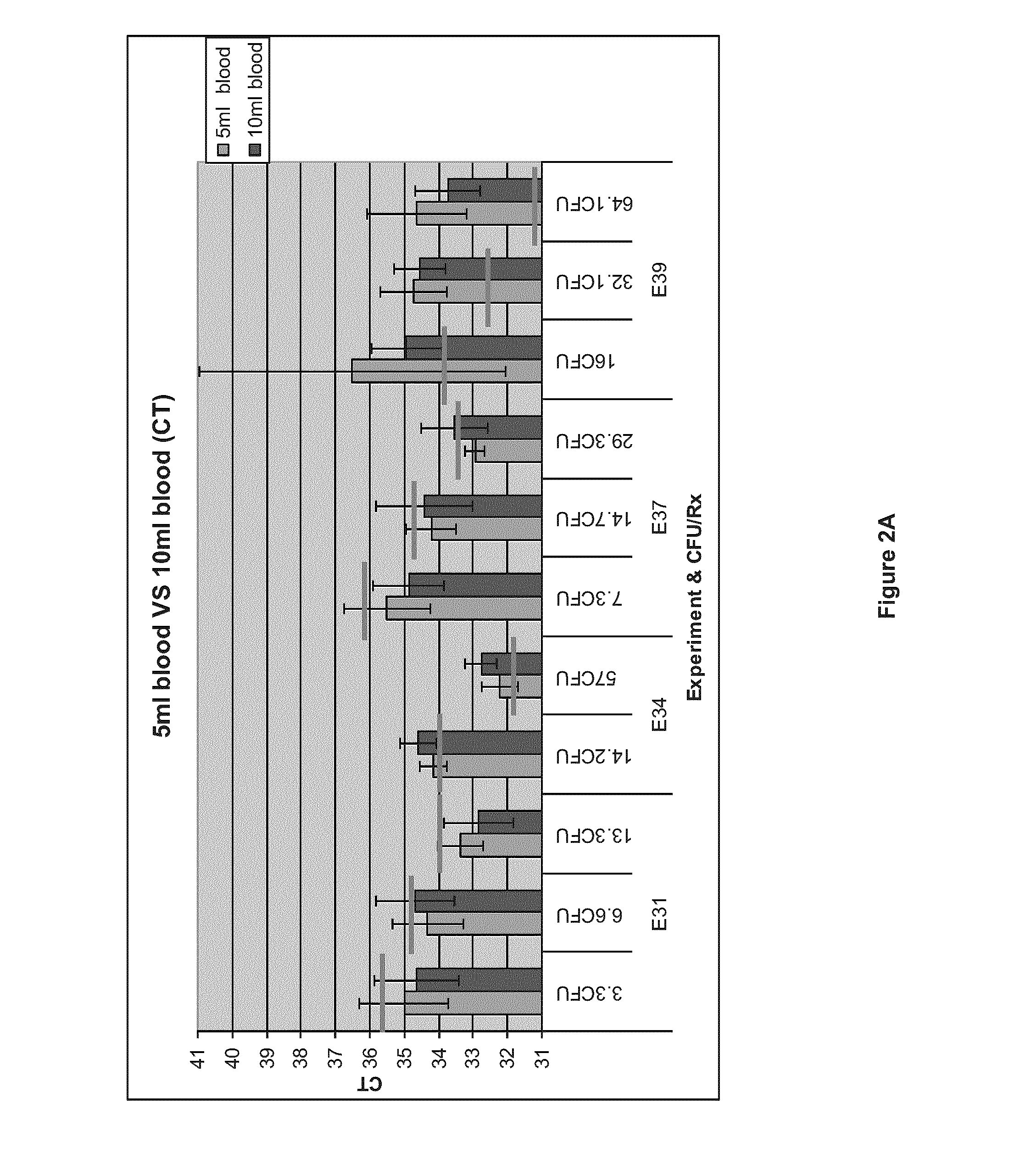Enrichment & isolation of microbial cells & microbial nucleic acids from a biological sample
a technology of microbial cells and nucleic acids, applied in the field of methods, can solve the problems of reducing the efficiency of nucleic acid testing, limiting the use of amplification assays, and reducing the sensitivity of diagnostic assays
- Summary
- Abstract
- Description
- Claims
- Application Information
AI Technical Summary
Benefits of technology
Problems solved by technology
Method used
Image
Examples
example 1
Material and Methods
[0092]Strains, storage and growth conditions. The bacterial species used as a model in the following experiments is Staphylococcus aureus (ATCC 36232). The strains were kept cryopreserved in 50% glycerol at −80 ° C. Bacterial cells were cultured at 35° C. on blood agar plates (Quelab, Montreal). After overnight incubation, three colonies were transferred into 10 mL of Tryptic Soy Broth (TSB) and were incubated overnight and used as stationary phase culture. The number of viable bacteria was determined by the standard spread plate method.
[0093]Blood donations. Blood donations were drawn at the Minnesota Memorial Blood Center and kept at 4° C. After usual testing for presence of HBV, HIV, STS and HCV the blood bag was cleared and shipped to INO facility (GSI-Qc) in isolated box cooled with ice packs. Upon reception, the blood was kept at 4° C. until use. Blood donation was 2-4 week-old when tested. The blood bag was dispensed in 50 mL-aliquot into 50-mL Falcon™ tub...
example 2
New Differential Lysis Protocol for Concentrating Microbial Cells from Large Blood Sample Volumes
[0094]A K3-EDTA fresh blood sample (K3-EDTA used was a liquid EDTA solution) of 5-10 mL was transferred into Sarstedt™ 10 ml tubes with round bottom containing equivalent of three times the lysis matrix contained in IDI-Lysis tube (BD GeneOhm lysis tube cat # 441243), 0.1% SDS as blood cell lysing agent and 0.005% of silicone as antifoaming agent. Each tube was then agitated at 170 rpm for 5 min at 25° C. onto a horizontal shaker. Following this blood cell lysis step, blood samples were centrifuged at 3200×g for 7 min. at room temperature.
[0095]Supernatant was discarded by aspiration using the device shown in FIG. 1. A small volume of liquid was left over the pellet of microbial cells, cell debris and extraction matrix. A volume of 100 μL of PBS was added before performing lysis of bacteria by vortexing 5 min at high speed on a conventional Vortex Genie™ with multi-tube adaptor. After ly...
example 3
Comparison of Specimen Processing Performance Between 10 ml and 5 ml Blood Sample Volumes
[0097]The objective of this experiment was to determine if processing 10 ml of blood samples could yield similar or better results than using 5 ml blood samples. Four experiments were conducted with four different blood donations (E31: 1472658, E34: 1475067, E37: 1477263 and E39: 1482868) according to the general procedure described in Example 1. Blood samples of 5 or 10 mL were spiked at approximately 100 CFU / volume to allow the comparison.
[0098]MPC purified DNA was then analyzed by Real-Time PCR, in 96-well plates, on a MyIQ™ (BioRad) instrument. PCR Mastermix™ (MM) was prepared as a 4×solution. S. aureus was amplified using genus specific primer set (TstaG—422 (GGCCGTGTTGAACGTGGTCAAATCA (SEQ ID NO:1)) and TstaG—765 (TIACCATTTCAGTACCTTCTGGTAA) (SEQ ID NO:2)) without internal control. Final reaction volume was 25 μL. Sample was added at two volumes (4.7 μL and 18.8 μL) to 6.25 μL of 4×MM with a...
PUM
| Property | Measurement | Unit |
|---|---|---|
| diameter | aaaaa | aaaaa |
| diameter | aaaaa | aaaaa |
| volume | aaaaa | aaaaa |
Abstract
Description
Claims
Application Information
 Login to View More
Login to View More - R&D
- Intellectual Property
- Life Sciences
- Materials
- Tech Scout
- Unparalleled Data Quality
- Higher Quality Content
- 60% Fewer Hallucinations
Browse by: Latest US Patents, China's latest patents, Technical Efficacy Thesaurus, Application Domain, Technology Topic, Popular Technical Reports.
© 2025 PatSnap. All rights reserved.Legal|Privacy policy|Modern Slavery Act Transparency Statement|Sitemap|About US| Contact US: help@patsnap.com



